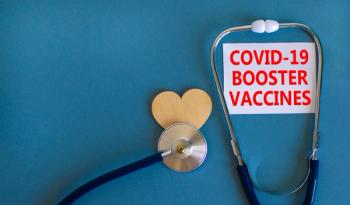
- MHE March 2021
- Volume 31
- Issue 3
The Price Tags on the COVID-19 Vaccines
Governments are the only buyers so far, and the amounts they are paying varies.
At the start of the COVID-19 pandemic last year, physicians were unsure which medications would effectively treat the disease and there was no vaccine. The race to find both novel and repurposed therapeutics and develop vaccines has been a multinational effort, although heavily funded by U.S. government dollars. Several therapies have now been granted emergency use authorization by the FDA. About 60 million doses of the Pfizer-BioNtech and Moderna vaccines have been administered, and the pace of vaccination is increasing to about 1.4 million doses a day. The Johnson & Johnson vaccine will be available this month, so the pace of vaccination may pick up even further.
But who is paying for these treatments and vaccines — and at what price?
So far, governments around the world have been the only purchasers of the COVID-19 vaccines, so the price has been set by government contracts. But different countries are paying different prices. South Africa, for example, reportedly paid $5.25 per dose for the Oxford-AstraZeneca vaccine in January, more than twice the price of $2.15 per dose paid by the European Union (EU), according to a report in BMJ. The South African government has announced that it is holding back on administering that vaccine because it may be less effective against the country’s namesake variant.
Please take our pharmacy survey: Click
The EU is also paying less for the Pfizer-BioNTech vaccine than the U.S., $14.70 per dose versus $19.50, according to figures reported in BMJ. On the other hand, the U.S. is paying less for the Moderna vaccine (about $15) than the EU (about $18), according to the BMJ piece. The contribution governments have made toward vaccine research is the explanation for the price differences. Moderna is charging the U.S. less for its vaccine because the U.S. government funded research that led to the vaccine’s development. Similarly, the EU supported research that led to the development of the Pfizer-BioNTech vaccine, thus the lower price for that vaccine for the EU.
Post-pandemic pricing?
There’s no question that the
Pfizer-BioNTech and Moderna vaccines have altered the course of the pandemic and, notwithstanding all the early problems with distribution, the vaccines have seeded some hope that herd immunity can be reached and transmission, slowed down if not stopped altogether.
But as time goes on, those two vaccines may be seen as pricey frontrunners. The Oxford-AstraZeneca and J & J are likely to present a trade-off: less efficacy but a much lower price. The phase 3 clinical trial results for the single-dose J&J vaccine showed that it is 66% effective at preventing moderate to severe cases of COVID-19 compared with the 95% effectiveness of the Pfizer-BioNTech and Moderna vaccines. But J&J is expected to price its single-dose vaccine at about $10 per dose, which would make it roughly a quarter of the price of the Pfizer-BioNTech vaccine, presuming that it stays a single-dose vaccine and the price stays the same.
But the long game of the companies that have thrown themselves into getting COVID-19 vaccines on the market may be quite different from the one they are playing now. It is entirely possibile that COVID-19 vaccination will become as routine as flu vaccination. There might be some downward pressure on prices as payers other than governments get involved. On the other hand, during an earnings call in early February, Pfizer CFO Frank D’Amelio described Pfizer’s $19.50-per-dose price as “pandemic pricing” and “that’s not a normal price like we typically get for a vaccine, $150, $175 per dose.”
D’Amelio said just a bit later during the call, “Now let’s go beyond a pandemic-pricing environment, the environment we’re currently in. Obviously, we’re going to get more on price. And clearly, to your point, the more volume we put through our factories, the lower unit cost will become. So clearly, there’s a significant opportunity for those margins to improve once we get beyond the pandemic environment that we’re in.”
Like Pfizer, Moderna has indicated that it may raise its prices after the pandemic ends, anticipating that COVID-19 will be endemic. The Moderna CEO said during a conference call last year that the pandemic pricing would be “well below value.”
U.S. government investment
But should the vaccine developers profit off their efforts? During a House Committee on Energy and Commerce hearing last summer, manufacturers were asked whether they would sell the vaccine at cost. Moderna and Merck (which announced in January that it was dropping out of the COVID-19 vaccine development race) said they would not sell their vaccines at cost. J&J said it wouldn’t make a profit from the vaccine during the pandemic. AstraZeneca said its U.S. deal would not make a profit.
The first vaccine pricing announcement came in July, when the U.S. government contracted with Pfizer and BioNTech to purchase enough vaccines for 50 million Americans. It’s no coincidence that the price of $19.50 per dose was similar to the pricing of the flu shots. Pfizer has said the research and development costs of its the vaccine approach $1 billion, and the company declined to take direct government funding.
But other companies have accepted huge government checks. AstraZeneca received up to $1.2 billion upfront, in exchange for at least 300 million doses. J&J is also receiving government money from the federal government’s Biomedical Advanced Research and Development Authority (BARDA). Early in the pandemic, BARDA agreed to provide $456 million toward the company’s research and development effort. In August, the federal government agreed to pay J&J $1 billion for 100 million doses of its vaccine, thus the $10-a-dose price.
As of mid-July, Boston-based Moderna had received $955 million in U.S. funding. The company said in August that it would charge between $32 and $37 per dose for its vaccine, although company officials also said the price would be adjusted depending on the amount ordered. That may explain the price of $15 per dose price charged to the U.S. for its order of 100 million doses. Still, the company has been criticized for its pricing, partly because it has received so much government research support. The Lown Institute in Boston gave Moderna one of its Shkreli Awards in January. The awards are for the ”worst examples of profiteering and dysfunction in health care.”
Deborah Ann Kaplan writer about medical and practice management topics.
Articles in this issue
almost 5 years ago
The Pandemic Pause: When Cancer Care Was Put on Holdalmost 5 years ago
The Pandemic One Year in: Providers Struggle with Loss of Revenuealmost 5 years ago
The Pandemic One Year in: The Silver Linings and Big Revealsalmost 5 years ago
The COVID-19 vaccine race was a sprint. Now for the hurdlesalmost 5 years ago
CVS Health Poised to Reenter ACA Marketplacesalmost 5 years ago
Yale Profs Take a Piece-by-Piece Approach to Healthcarealmost 5 years ago
Biden Administration Moves to Stop Medicaid Work Requirementsalmost 5 years ago
Opinion: Coming Together During a PandemicNewsletter
Get the latest industry news, event updates, and more from Managed healthcare Executive.






















































